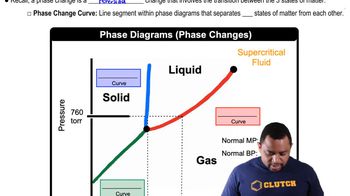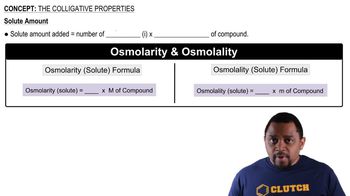Here are the essential concepts you must grasp in order to answer the question correctly.
Phase Diagram
A phase diagram is a graphical representation that shows the phases of a substance as a function of temperature and pressure. It illustrates the boundaries between different phases (solid, liquid, gas) and indicates the conditions under which each phase is stable. Understanding phase diagrams is crucial for analyzing how substances behave under varying environmental conditions.
Recommended video:
Phase Changes in Diagrams
Colligative Properties
Colligative properties are properties of solutions that depend on the number of solute particles in a given amount of solvent, rather than the identity of the solute. These properties include boiling point elevation, freezing point depression, vapor pressure lowering, and osmotic pressure. They play a significant role in understanding how the addition of solute affects the phase behavior of a solvent.
Recommended video:
Phase Boundaries
Phase boundaries are the lines on a phase diagram that separate different phases of a substance. They indicate the conditions (temperature and pressure) at which two phases can coexist in equilibrium. In the context of pure solvents and solutions, the phase boundaries differ due to the presence of solute, which alters the physical properties and stability of the phases.
Recommended video:
Phase Changes in Diagrams







